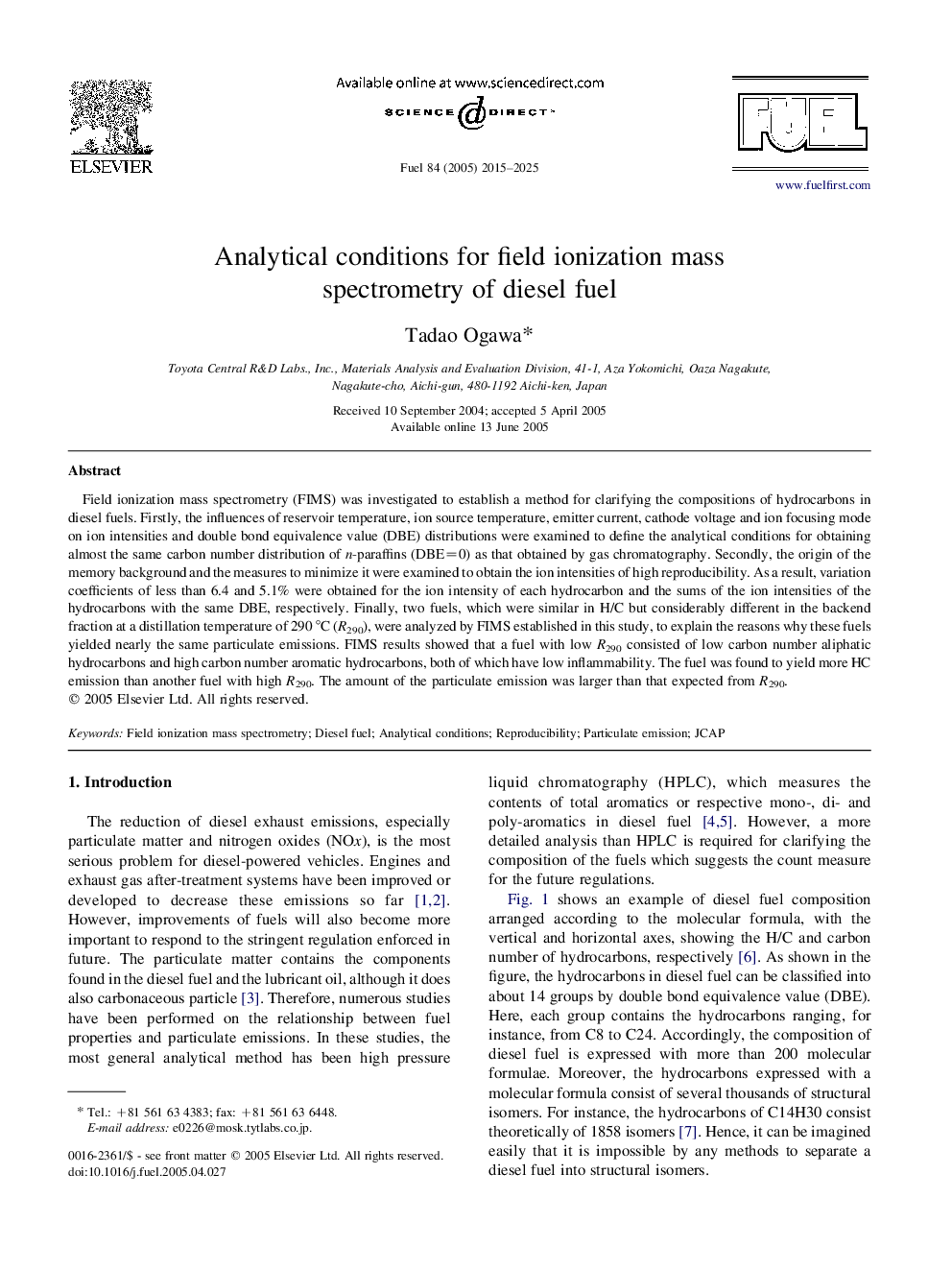| Article ID | Journal | Published Year | Pages | File Type |
|---|---|---|---|---|
| 208861 | Fuel | 2015 | 11 Pages |
Field ionization mass spectrometry (FIMS) was investigated to establish a method for clarifying the compositions of hydrocarbons in diesel fuels. Firstly, the influences of reservoir temperature, ion source temperature, emitter current, cathode voltage and ion focusing mode on ion intensities and double bond equivalence value (DBE) distributions were examined to define the analytical conditions for obtaining almost the same carbon number distribution of n-paraffins (DBE=0) as that obtained by gas chromatography. Secondly, the origin of the memory background and the measures to minimize it were examined to obtain the ion intensities of high reproducibility. As a result, variation coefficients of less than 6.4 and 5.1% were obtained for the ion intensity of each hydrocarbon and the sums of the ion intensities of the hydrocarbons with the same DBE, respectively. Finally, two fuels, which were similar in H/C but considerably different in the backend fraction at a distillation temperature of 290 °C (R290), were analyzed by FIMS established in this study, to explain the reasons why these fuels yielded nearly the same particulate emissions. FIMS results showed that a fuel with low R290 consisted of low carbon number aliphatic hydrocarbons and high carbon number aromatic hydrocarbons, both of which have low inflammability. The fuel was found to yield more HC emission than another fuel with high R290. The amount of the particulate emission was larger than that expected from R290.
